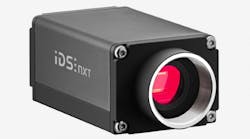The following is a discussion with Eric Ramsden, Product Manager at Lumenera Corporation
Name: Eric Ramsden
Company: Lumenera Corporation
Title: Product Manager
What is your latest product and for what reason was it developed?
One of our newest products is the Lt1265R 12MPixel compact CCD camera. This model extends the Lt(x)65R USB 3.0 family of cameras based on Sony’s newest high resolution CCD sensors with EXview HAD II technology. The family came about from detailed interactions with our customers about what they were looking for in their next generation cameras. There were three key criteria that they identified: image quality, frame rate, and interface.
With the Lt(x)65R family, we were able to create a scalable solution, at 3, 6, 9, and 12 MPixel, that offers high quality and resolution images, with high dynamic range and low noise. Our engineers have done an amazing job of squeezing out every bit of frame rate performance from the ICX sensors to deliver the fastest cameras available on the market using a USB 3.0 interface.
MORE ARTICLES
Vision system ensures consistent paint matching in automotive manufacturing
USB CAMERAS AND INTERFACES: Camera and peripheral vendors tout USB 3.0 interface performance
Are market changes affecting your product development, and if so, how?
Market changes are always impacting our product development. This comes about in three different ways: customer interactions, new applications, and new technology. We are always gathering input from our customers and feed that back in real-time into the development process. We have a standard roadmap that we feel matches the requirements of a large part of our potential customer base. And for applications that require something unique, we are able to adapt quickly to meet their needs.
We are finding that more and more applications are starting to use imaging solutions in their systems. If you think back on it, only a few years ago machine vision applications were done largely through manual visual inspection. This slowed down the process and was subject to human error. Today, most of these applications are done using more sophisticated automated imaging systems to greatly speed up manufacturing time as images can be taken and processed faster than the eye can see and improves the product quality with strict pass/fail criteria.
As technology advances, people find new ways to implement vision systems that were not possible before. For example, unmanned aerial vehicles (UAV) are a new growth area that was only seen in movies until recently. Today, companies are using this technology to safely image hostile environments, accurately render 3D maps, and measure water and nitrogen levels for agriculture. To use an old phrase "the sky’s the limit!"
In which areas or applications do you see the most growth?
We are seeing a lot of growth in the imaging industry, and with that comes more demands on the camera. While high speed cameras are available today, there is always a tradeoff between frame rate, resolution, and price. However, new technologies are able to increase camera performance vs. price, resulting in higher accuracy images that meet challenging application requirements. For example, quality control imaging can monitor a higher level of detail while still achieving high speeds. Given the increase in demand for quality products, as well as the need for higher output, this is an area that will always be growing.
A second area where there is a lot of potential is in the evolution of CMOS sensors to become more self-contained imaging systems. More features are being integrated directly onto CMOS sensors, such as computational abilities. This offloads processing power required on a host computer and reduces the amount of post-imaging processing that is required to obtain a quality image allowing for more analysis time and faster feature recognition.
Page 1 | Page 2








